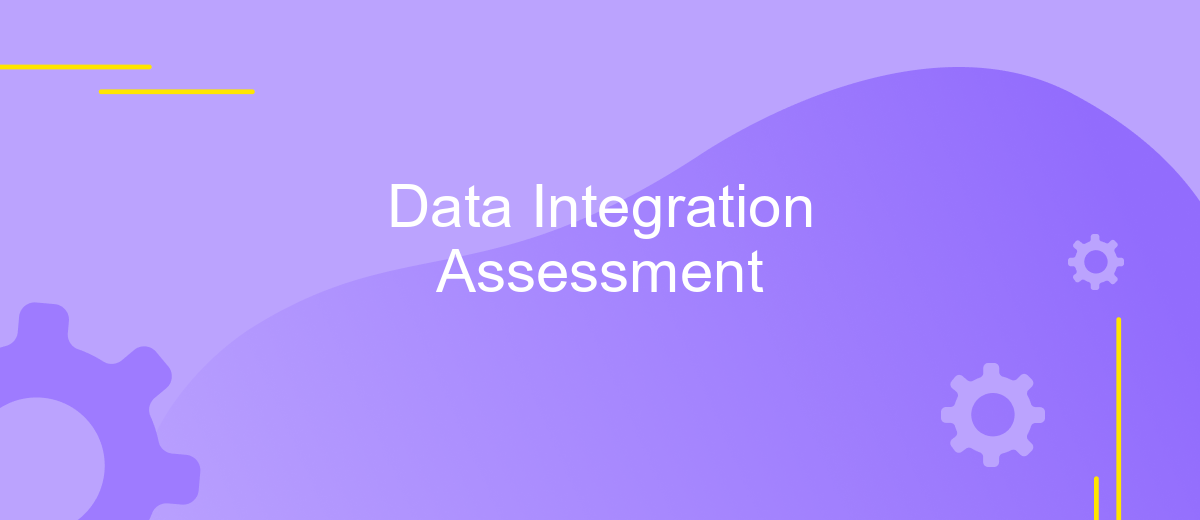Data Integration Assessment
In today's data-driven world, effective data integration is crucial for organizations seeking to harness the full potential of their information assets. A comprehensive data integration assessment provides a strategic overview of current processes, identifying strengths and areas for improvement. This article explores the key components of a successful data integration assessment, offering insights into best practices and innovative approaches to streamline data flow and enhance decision-making capabilities.
Current State Assessment
The current state assessment of data integration involves a comprehensive evaluation of existing systems and processes. It aims to identify strengths, weaknesses, and opportunities for improvement in the integration of data across various platforms. This assessment provides a clear understanding of how data is currently managed, shared, and utilized within the organization, setting the stage for future enhancements.
- Examine existing data sources and their compatibility.
- Evaluate current data integration tools and technologies.
- Identify gaps in data accessibility and quality.
- Assess data governance and compliance with regulations.
- Analyze the efficiency of data workflows and processes.
By conducting a thorough current state assessment, organizations can pinpoint critical areas that require attention and resources. This process not only highlights potential risks and bottlenecks but also uncovers opportunities for leveraging data more effectively. Ultimately, the insights gained from this assessment will guide strategic decisions, ensuring that data integration efforts align with organizational goals and drive value creation.
Data Integration Requirements

Effective data integration requires a comprehensive understanding of the organization's data landscape and its specific needs. The first step is to identify the data sources that need to be integrated, such as databases, applications, and external platforms. It's crucial to ensure that the data is accurate, consistent, and timely across all systems. This involves setting clear objectives for the integration process, including the types of data to be merged, the frequency of updates, and the desired outcomes. Additionally, establishing data governance protocols and security measures is essential to protect sensitive information during the integration process.
Choosing the right tools and platforms is vital for successful data integration. Solutions like ApiX-Drive can streamline the integration process by providing a user-friendly interface and robust automation capabilities. ApiX-Drive allows organizations to connect various applications and services without extensive coding, reducing the time and effort required for integration. It supports real-time data synchronization, ensuring that all systems are up-to-date. By leveraging such tools, businesses can enhance their data integration efforts, leading to improved decision-making and operational efficiency.
Solution Design and Architecture

In the realm of data integration, a robust solution design and architecture are paramount for seamless data flow and management. The architecture should be scalable, allowing for future growth and adaptation to new data sources and technologies. It must ensure data consistency, accuracy, and security across all integrated systems, providing a reliable foundation for decision-making processes.
1. Establish a centralized data repository to store and manage all integrated data efficiently.
2. Implement real-time data processing capabilities to enhance data timeliness and relevance.
3. Utilize ETL (Extract, Transform, Load) tools to streamline data transformation and integration processes.
4. Incorporate data governance policies to maintain data quality and compliance.
5. Design a modular architecture that supports easy integration of additional data sources.
By adhering to these principles, organizations can create a data integration architecture that not only meets current needs but also adapts to evolving business requirements. This strategic approach ensures that data remains a valuable asset, driving informed decisions and fostering innovation across the enterprise.
Implementation Plan and Roadmap

The successful implementation of a data integration assessment requires a structured and strategic approach. Initially, it's crucial to establish clear objectives and identify the key stakeholders involved in the process. This foundation will guide the development of a comprehensive plan that addresses the specific needs and challenges of the organization.
Once the objectives are set, the next step involves selecting the appropriate tools and technologies that align with the organization's data integration goals. This selection should be based on a thorough evaluation of current systems and future requirements. Additionally, defining a timeline for implementation is essential to ensure that the process remains on track and within budget.
- Define clear objectives and identify stakeholders.
- Select appropriate tools and technologies.
- Conduct a thorough evaluation of current systems.
- Establish a realistic timeline for implementation.
- Allocate resources and assign responsibilities.
By following this roadmap, organizations can effectively integrate their data systems, enhancing decision-making and operational efficiency. Continuous monitoring and evaluation of the integration process will ensure that the systems remain aligned with organizational goals and can adapt to changing demands.
Cost-Benefit Analysis and ROI
Conducting a cost-benefit analysis for data integration involves evaluating the financial implications against the potential advantages. The initial costs include acquiring integration tools, such as ApiX-Drive, which simplifies the setup process by automating data flows between various platforms. This investment can significantly reduce manual labor, minimize errors, and enhance data accuracy. Additionally, ongoing costs may encompass maintenance and potential upgrades. However, the benefits, such as improved decision-making, increased productivity, and enhanced data accessibility, often outweigh these expenses. By streamlining operations, businesses can allocate resources more effectively, ultimately leading to cost savings and increased revenue.
Calculating the return on investment (ROI) involves assessing the financial gains relative to the costs incurred. With tools like ApiX-Drive, businesses can achieve a faster ROI due to reduced operational inefficiencies and enhanced data utilization. The automation of data integration processes not only saves time but also empowers organizations to respond swiftly to market changes. By improving data management, companies can unlock new opportunities, thus enhancing their competitive edge. Ultimately, a well-executed data integration strategy can deliver substantial long-term financial returns, justifying the initial investment.
FAQ
What is Data Integration Assessment?
Why is Data Integration Assessment important?
What are the key components of a Data Integration Assessment?
How can businesses automate their data integration processes?
What are the common challenges faced during Data Integration Assessment?
Apix-Drive is a universal tool that will quickly streamline any workflow, freeing you from routine and possible financial losses. Try ApiX-Drive in action and see how useful it is for you personally. In the meantime, when you are setting up connections between systems, think about where you are investing your free time, because now you will have much more of it.

